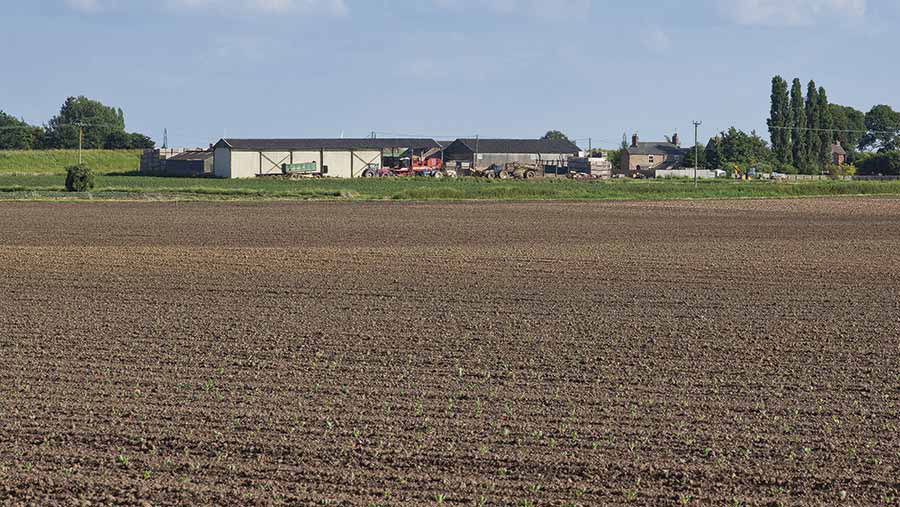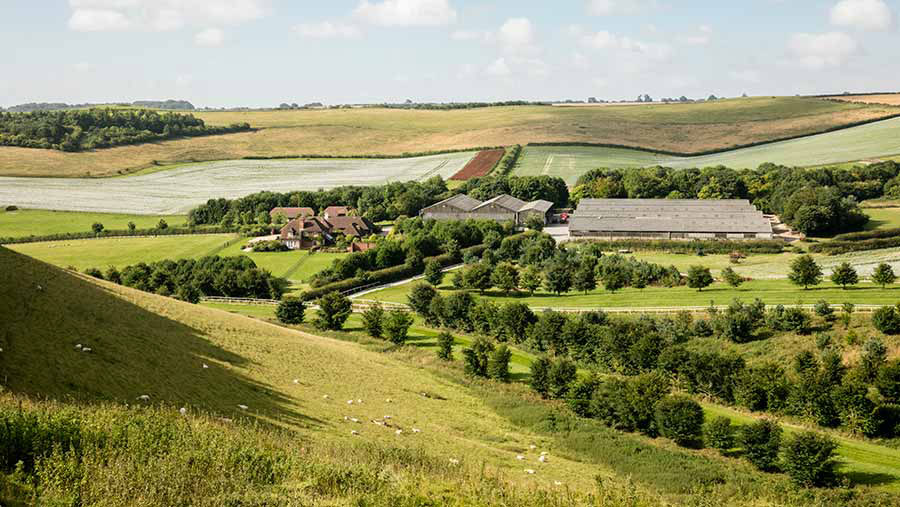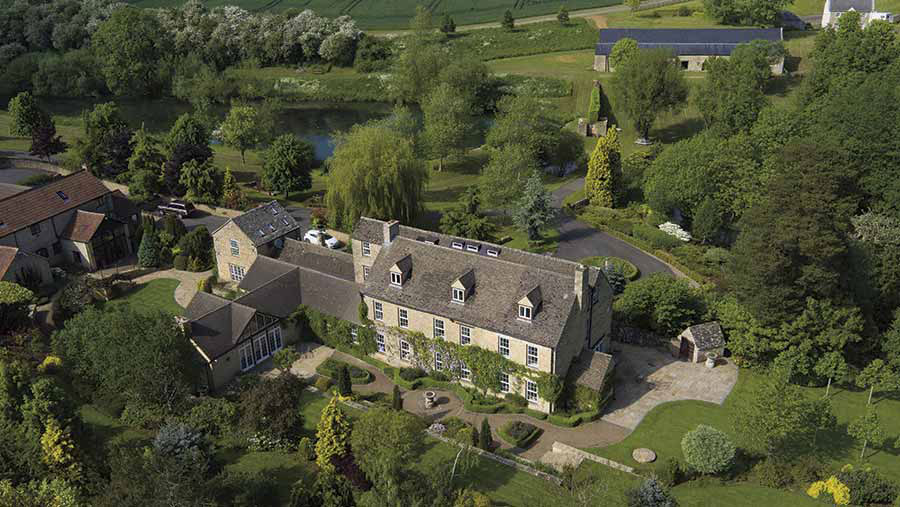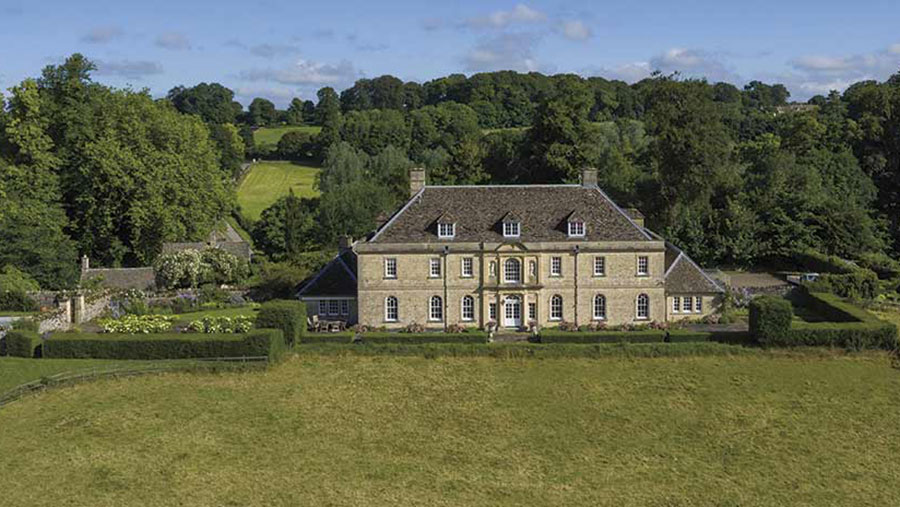Farmland buyers: Who are they and what do they look for?
Farmers looking to acquire land increasingly have to compete with non-farmer buyers – from those interested in the investment potential and so-called “rollover” buyers looking to divest the proceeds of a sale to those focused on a lifestyle purchase.
Ben Pike asks Clive Hopkins, head of farms and estate sales at Knight Frank, to explain who is in the market and what they are looking for.
See also: In pictures: Arable farm with £5m price tag enters market
Investment buyers
“The capacity and earning potential of the holding is of high consideration for the investor buyer,” Mr Hopkins says.
Investors are not location specific, because they have the option to buy a number of farms, whereas a neighbouring farmer may be prepared to pay a premium to own the land next door.
Investors are looking to buy quality holdings that have cropping flexibility. They are want to own it from the medium term onwards – a short-term investment is less attractive because of the cost of purchase.
Example farm: Rummers Farm
Marketed in June 2014, this farm near Wisbech, Cambridgeshire, had 560 acres of Grade 1, irrigated soils capable of producing a variety of high-yielding fruit and vegetable crops. With crop storage and no house, its guide price was offers in excess of £6m.

Rollover buyers
Despite being well resourced from a recent sale of farmland for development, rollover buyers are still frugal with their cash.
“You are in the realms of a businessman who has sold their business. They are savvy and not spending money blind. It is a considered purchase.”
Their primary driver is to find the right qualifying asset to invest in that will protect their capital gain from the taxman.
“If their whole farm has been taken they might up sticks and look at farms across the UK,” Mr Hopkins said. “But if only part of their land has been taken they will be focused on finding something in their area.”
Any farm could attract the interest of a rollover buyer, but typically they are looking to buy a lot of land, with the house less important.
Example farm: Barbury Castle Estate
With nearly 900 acres of arable land and more than 500 acres of grassland, the estate in the Marlborough Downs, Wiltshire, also has let racehorse stables. Contracts have just been exchanged. Its guide price was £20m.

Farmer buyers
“Farmers look for well-equipped farms with a good set of buildings. They are not necessarily house-led but there will be an element of that if they are buying for their family,” Mr Hopkins says. “They will be looking at the quality of the land and the flexibility it provides.”
A ring-fenced block with well-proportioned fields is preferred, with good access for modern machinery becoming ever more important. How the land has been farmed will also come under scrutiny from a farmer buyer.
“If it’s been badly farmed the investment to get it up to the required level will be very important. Buyers will look at soil structure, mineral content and yields.”
Example farm: Old Chalford Estate
The 604-acre estate near Chipping Norton, Oxfordshire, is a ring-fenced predominantly arable unit, equipped with an extensive range of modern buildings, including grain storage. Its guide price is offers in excess of £9m and it is now under offer.

Lifestyle buyers
Lifestyle buyers have their eyes on farms and estates across a range of price points.
“As well as a good house they want woodland, a river, a shoot, amenity land and farmland,” Mr Hopkins says. “All that, plus the location. They want privacy, not isolation.”
Proximity to London is now less important than it was, but estates within a 120-mile radius are “in the pocket for a lifestyle buyer”, Mr Hopkins says.
A large farmland acreage does not put off lifestyle buyers, who will usually look at contract farming or a share farming agreement.
Example farm: Bibury Court Estate
Just one hour from London, near Cirencester, the estate has a range of houses plus sporting appeal and 762 acres of land, about 500 of which is arable. The guide price is £17.5m.

Institutional buyers
For institutional investors, the primary goal is to provide an uplift in value over 15-20 years.
“They’re not looking purely at the quality of the land or the buildings. They want a mixed opportunity from a farm or estate where they might, over time, sell some cottages or follow up on a strategic development opportunity.”
Farms with land on the edge of towns and villages with housing potential have become attractive.
Example: Farm near Epping
A strategic investment portfolio near Epping has 1,900 acres across eight let farms, plus 21 houses, development potential and an additional 1,940 acres of commercial and amenity space. The guide price is £35m.

